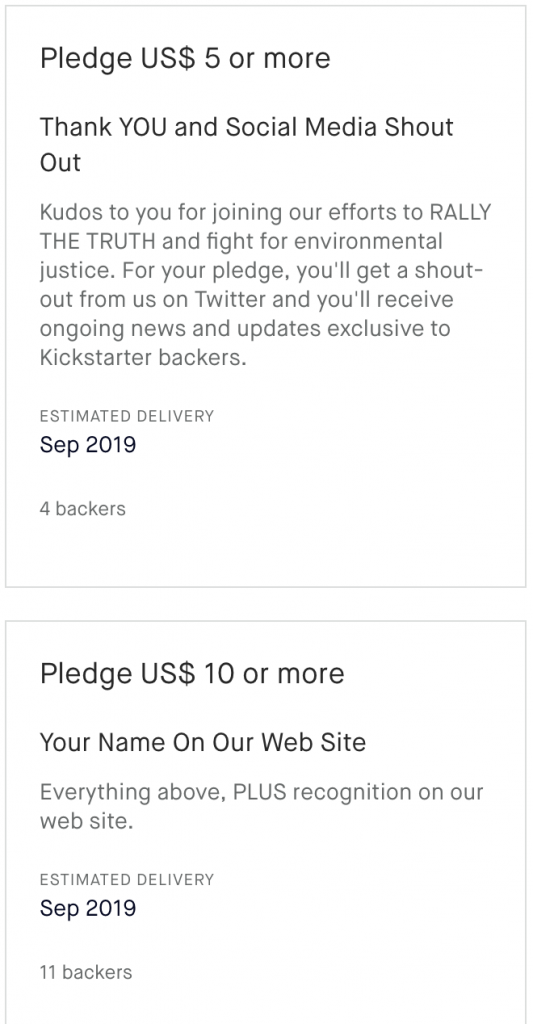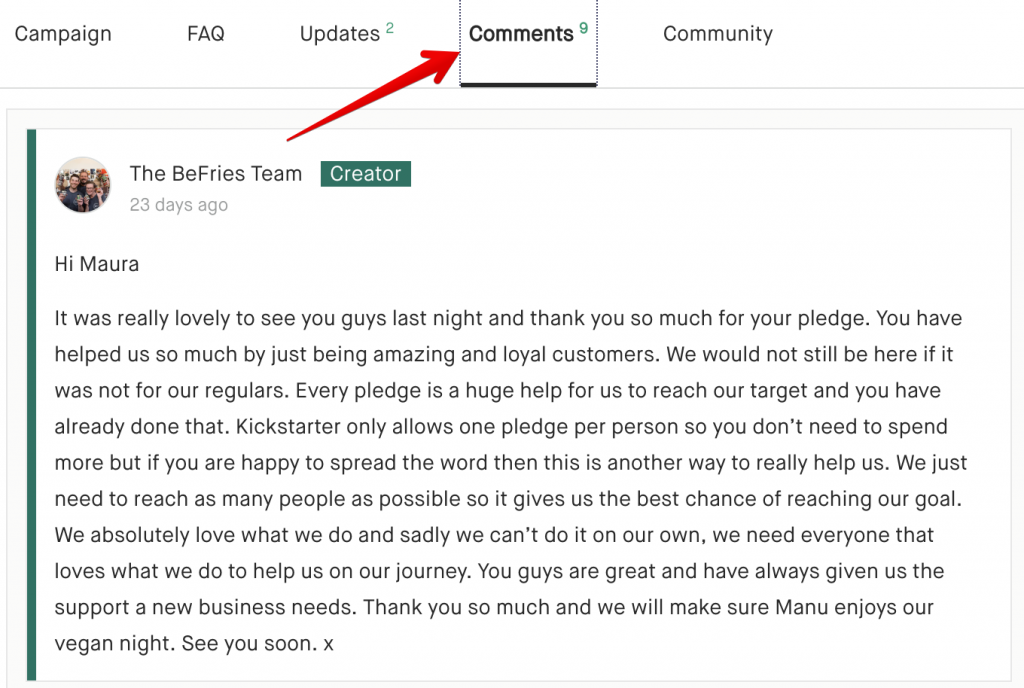It’s a heartbreaking thing to see when a person launches a crowdfunding campaign, hoping to fund their dream product. They’ve put their heart and soul into the project and are desperate to get it off the ground. But, despite all their hard work and big dreams, they don’t raise enough funding to launch their product. And so, they go back to the drawing board in an effort to figure out what they did wrong.
This is not an uncommon scenario. In fact, only around 1 in 3 Kickstarter projects reach their full funding amount. These stats are hard to swallow. For every three Kickstarter projects started, two fail.
So how can you ensure that your crowdfunding efforts are not in vain? In this post, we’re going to show you five reasons why many crowdfunding campaigns fail. By avoiding these mistakes, you can ensure that you’re campaign is a rousing success.
1. Failing to Build a Community Before You Launch
You can’t simply launch a crowdfunding campaign and then expect random people to donate to it.
Yes, this can happen if you reach the front page of Kickstarter or Indiegogo, but in order to reach the front page, you need to have some traction first. The projects that get featured on the front page are those that already are getting significant traffic and are likely to reach their funding goal.
The solution?
Build a community around your project before you start it. In other words, get a specific group of people excited about your launch and eager to donate money before you launch your crowdfunding campaign.
The bigger the community you create around your campaign, the more funding you’ll raise and the more traffic you’ll attract to your campaign.
What are some specific ways that you can do this?
- Build a pre-launch page – Before you launch your campaign, build a page where you can send interested visitors. This page should contain sufficient information about your campaign to get people excited about it.

- Utilize social media – Before you launch, begin spreading the word among your social media connections. Tell them about your upcoming campaign, why you’re doing it, and the benefits people will get for supporting it.
- Build your email list – Using strategic lead magnets, build your email list before you launch your campaign. Then update your list on the progress of your upcoming campaign, telling them what they can expect and announcing your official launch.
The more you can build your community in advance of your launch, the more traffic you can direct to your actual campaign. This increases the amount of funding you receive overall and can also lead to you getting on the first page of your crowdfunding platform.
Mark Pecota helpfully puts it this way:
Once Kickstarter’s algorithm sees your campaign doing well, you will get a higher ranking in both their “Magic” and “Popular” rankings, which are the most browsed filters.
This is why it’s so important to start your marketing efforts months before your campaign even launches. And when I say “build a community,” I mean a group of people that you feel confident are going to buy your product when you launch.
2. Uninspiring Rewards

Inevitably, there will be some people who support your campaign simply because they want to support your dreams and efforts. But you can’t rely on the goodwill of people to fund the entirety of your campaign.
You need to offer some truly inspiring, motivating rewards if you want people to support your campaign.
Don’t make the assumption your backers are putting money into your campaign out of the goodness of their hearts. Sure, there’s an emotional connection between crowdfunding backer and creator but backers are in it for the rewards. It’s essential that you create an amazing reward program for the backers of your campaign. Incentivize them to back you for getting quality rewards in return.
The most successful campaigns have a nice mix of rewards in the $1, $5, and $10 range. If you can get a few thousand backers in this price range, you can easily raise a significant amount of money.
When thinking through your rewards, ask yourself:
- Is this something I would want?
- Does this add real value to the backers of my project?
- Why would someone actually want this reward?
- Is the reward received in alignment with the amount given (in other words, bigger amounts should receive bigger rewards)?
Whatever you do, don’t skimp on the rewards for your campaign. They are the primary driver when it comes to acquiring backers. The better your rewards, the more successful your campaign will be.
3. Failing to Sufficiently Answer Questions
Many projects receive hundreds, if not thousands, of questions. People want to know exactly what they’re getting, how they’ll get it, and when it will be delivered. If your campaign is for a physical product, people want to know the dimensions, the materials it’s made of, etc.

If you want to run a successful campaign, you need to be prepared to answer all of these questions.
Yes, this takes a significant amount of time and effort, but it’s well worth it. The more you can communicate with your backers and get them involved in the campaign itself, the more excited they’ll be for the project. And the more excited they are for the project, the more likely it is to succeed.
Transparency is also critical when it comes to running a successful campaign.
If you want your backers to continue supporting you throughout the duration of your campaign, you need to be honest with them about the state of things. Keep them updated on the progress you’re making, any roadblocks you encounter, and when they can expect the final product to be delivered.
4. Lacking a Clear Value Proposition
Few things will kill a campaign faster than not having a clear, concise, compelling value proposition. Put simply, the value proposition is what your backers get from supporting the project.
Some of your backers will support you simply because they want to see your dream come to life. But as noted, you can’t rely upon these supporters for the majority of your funding. You must be able to provide your backers with a compelling reason to support your campaign.
If you can’t clearly articulate the big why behind your project, you’ll fail to gain much traction on your campaign.
What sorts of value propositions work well? Consider the following:
- Utility – Your project will enable people to do something they couldn’t previously
- Ethics – Your project will produce something in a new, ethical way never done before
- Cutting edge technology – You offer a never-before-seen technology that will revolutionize how things are done
- Cost savings – You provide a superior product for a lower price
- Personal story – You have a personal, passionate reason for making your project a reality
Again, to quote Mark Pecota:
I find it helpful to start with the questions: what problem am I really solving and how am I solving it?
With those answers, I create what I call the “tip of the spear” messaging. Meaning, when describing the product, what will I lead with every time that resonates the most with my customer?
Work hard to ensure that your “tip of the spear” messaging — your value proposition — is so clear and compelling that people will be deeply motivated to support your campaign. Don’t skimp on this particular step. If you fail here, it’s hard to recover.
5. Insufficient Planning
Crowdfunding is not for the faint of heart. If you want to reach your funding goals, it’s absolutely essential that you spend a large amount of time planning and preparing before you launch your campaign.
Crowdfunding campaigns typically happen in three stages:
- The initial surge of funding when people are excited about your project.
- The dip when the initial excitement wears off.
- The final push when a final surge of funds come in.
Each stage requires meticulous planning.
You need to have a strategic plan in place for:
- How you’re going to generate an initial surge of funding
- How you’re going to keep funds coming in after the initial surge
- The communication methods you’ll use to reach your audience
- The rewards you’ll give backers
- The stretch goals you’ll pursue if you surpass funding
- Any roadblocks you may encounter during fundraising or production
- How you’ll stay on top of the questions posed by backers
- How you’ll actually create your project if your funding goals are reached
- How you’ll get your project into the hands of backers
When it comes to crowdfunding, the dictum is true: Fail to prepare, prepare to fail. If you fail to sufficiently prepare for each stage of the campaign, your campaign is doomed to fail.
Crowdfunding is unique when compared to other ways of generating revenue. You’re asking people to give you money long before they’ll actually receive the finished product. Because of this, you need to plan out every aspect of your campaign.
Don’t Miss Your Target
In a perfect world, you would simply take your crowdfunding live, sit back, and watch all the funds come pouring in. Unfortunately, we don’t live in a perfect world. If you want success in your crowdfunding campaign, you’ll need to work hard.
By building a community in advance, you can get early traction on your project.
By creating highly inspiring rewards, you can attract a sufficient number of backers.
By answering all the questions of your backers, you ensure that your backers feel like they’re actively a part of your campaign.
By crafting a compelling value proposition, you motivate people to back your campaign.
And by taking the time to do sufficient planning, you ready yourself for each stage of your campaign.
Don’t skip out on any of the above elements. If you do, it’s much more likely that you’ll miss the mark and fail to raise sufficient campaign funds. Do the work. Reap the rewards.
This is a Contributor Post. Opinions expressed here are opinions of the Contributor. Influencive does not endorse or review brands mentioned; does not and cannot investigate relationships with brands, products, and people mentioned and is up to the Contributor to disclose. Contributors, amongst other accounts and articles may be professional fee-based.

